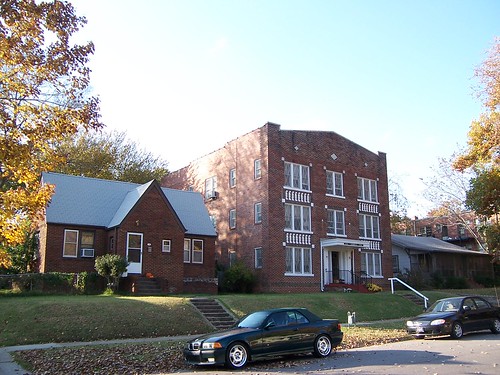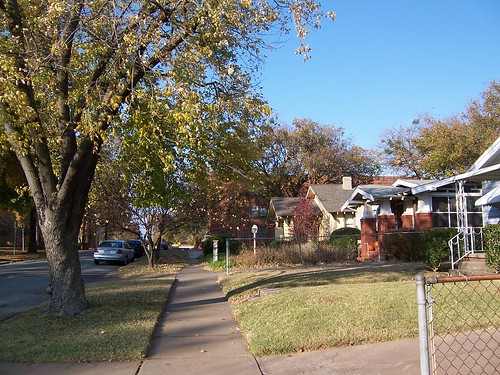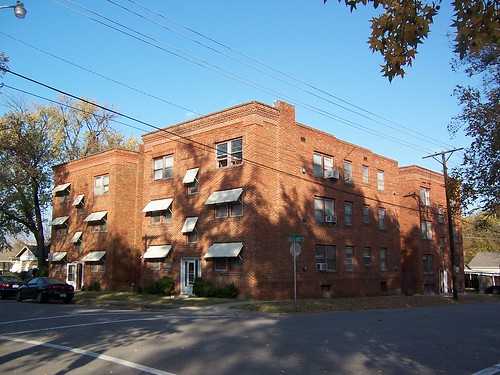Tulsa Election 2011: October 2011 Archives
CORRECTED to include all Working Tulsans contributions. In my haste to post the list of contributors, I only included those on the printed attachment and missed those on the handwritten portion of the form.
Analysis to come (after trick-or-treat), but for now, here are the ethics reports filed by PACs, candidates, and issue committees as of 4:45 pm today.
Tulsa_City_Election_2011_Pre-General_Ethics_Reports-20111031.pdf
The PDF includes filings for the mysterious "Working Tulsans" group that sent mail on behalf of several candidates (including Jeannie Cue, David Patrick, and Skip Steele) before the primary. Here's the list of contributors, a quick copy and paste from the report.
9/2/2011 George B. Kaiser, PO Box 21468, Tulsa, OK $5,000
9/2/2011 Stacy Schusterman, PO Box 699, Tulsa, OK $5,000
9/2/2011 Jay Helm, 5727 S. Lewis, Tulsa $5,000
9/8/2011,9/23/2011 Burt B. Holmes, PO Box 1440, Tulsa, OK $4,500
9/8/2011 Daryl Woodard, 6311 E. 105th St, Tulsa, OK $2,000
9/8/2011 Stuart Price, 113 E. 22nd PI., Tulsa, OK $2,000
9/2/2011 Paul Lackey, 2200 S. Utica, Tulsa, OK $1,000
9/23/2011 Russell A. Richardson, 3114 E. 81st Tulsa, OK $1,000
10/3/2011 E. Terrill Corley, 1809 E. 15th St. Tulsa, OK $1,000
10/15/2011 George F. Bashaw, Jr., PO Box 52490 Tulsa, OK $500
Daryl Woodard, you'll recall, was the Mayor's appointee to the redistricting commission. Woodard had previously endorsed council-suer Burt Holmes' council-packing efforts. George Kaiser needs no introduction. Stacy Schusterman (a classmate of mine from 4th through 12th grade) is CEO of Samson Investment Company and VP/Treasurer of the Charles and Lynn Schusterman Foundation.
Jenks and Owasso voters turned down property tax increases (general obligation bond issues) by overwhelming margins on Tuesday, while Broken Arrow school district voters approved a reallocation of an existing bond issue that involved no tax increase at all.
According to KRMG News, the Owasso tax increase would have amounted to about $170 annually on a $100,000 home, while the Jenks increase would have been about $25 per $100,000.
Complete but unofficial results from the Tulsa County Election Board:
ÂCity of Jenks
Fire equipment, police headquarters
Yes 288 32.99%
No 585 67.01%
 Â
City of OwassoProposition 1: Youth sports facilities
Yes 676 14.02%
No 4146 85.98%Proposition 2: Streets
Yes 1,088 22.53%
No 3,742 77.47%Proposition 3: Parks and aquatic center
Yes 779 16.21%
No 4,026 83.79%ISD-3 (Broken Arrow)
Yes 2,671 78.19%
No 745 21.81%
It appears that voters want their elected officials to focus on the basics and even then they want to see good stewardship of existing revenue streams rather than higher rates.
This is the make-do era. We are paying down debt, delaying major purchases, taking few risks, making the most of what we already have. In the current environment, transferring money from homeowners to heavy construction companies for the sake of some nice-to-haves doesn't make much sense.
Tulsa's establishment and elected officials will probably take the wrong lesson from the result and assume a marketing failure. Hire the right PR firm, the right political consultants, and any tax hike will pass. It worked in 2003. It almost worked in 2007.
But not now, not for a long time to come.
The American Planning Association has named Tulsa's historic Swan Lake neighborhood one of ten Great Neighborhoods for 2011, part of the APA's annual recognition of "Great Places In America." (Hat tip to KRMG News for the story.)
From the APA's citation:
What dominates this attractive and popular neighborhood are the well-maintained sturdy bungalows built along tree-lined streets between 1920 and 1930. Apartment buildings, which meshed with the development's middle-class appeal, appeared on outlying streets as early as 1918. One innovative apartment complex built in 1929 featured a courtyard at its center to provide outdoor recreation space for its tenants. Duplexes and garage apartments -- many from Swan Lake's earliest days -- continue to attract singles, young couples, and empty-nesters.Once a spring-fed watering hole, Swan Lake eventually became a community gathering place and the site of a 1910 amusement park. Today the lake and surrounding park, a popular bird watching spot, are the focus of neighborhood attention as residents raise funds to restore a 1920s stone fountain.
Finding solutions to commercial encroachment is another focus of residents. The neighborhood is within easy walking distance of the very popular Cherry Street retail and restaurant corridor, several medical facilities, and other businesses. The Swan Lake Neighborhood Association, which initiated a successful effort to add a historic preservation zoning overlay, supports efforts to keep commercial development on the perimeter of the neighborhood from expanding into the residential district.
Another positive feature noted by APA is the mix of housing: More expensive, larger single family homes around the lake and around the southern end of the neighborhood, a mix including smaller bungalows and brick apartment buildings through the northern half of the neighborhood. This is a neighborhood where you could find housing suitable for any stage of your life. The couple that spends $100 for dinner and drinks on Cherry Street lives in the neighborhood; so does their waiter and their bartender and the barista who makes the lovely designs on their after-dinner lattes.
Historic preservation has helped to preserve that diversity of housing stock. You can see what happens without that protection by heading north of Cherry Street -- affordable bungalows and brick apartment buildings replaced by $300,000-plus townhomes (which are now selling at a deep discount from their peak prices). Speculation replaced affordability for which there was a demand with luxury which apparently lacks strong demand at the moment.
Note the balance in the APA's description -- walking distance of popular shopping districts is a good thing, but protection of the residential area against commercial encroachment is important, too, especially since new commercial development is likely to be larger in scale, be less attractive, require more off-street parking, and use lower quality building materials and techniques than the commercial development from the 1920s and 1930s along Cherry Street.
The APA specifically salutes legislative efforts to prevent that encroachment:
- Organized in 1983, Swan Lake Neighborhood Association launched a successful campaign (1992) to list neighborhood in the National Register of Historic Places (1998)
- City approves neighborhood petition for Historic Preservation overlay zoning for Swan Lake and adopts design guidelines (1994)
- Residents support legislative efforts (2011) to close loophole permitting commercial development within boundaries of Historic Preservation Zoning districts
- City council places a moratorium, to expire December 1, 2011, on use of planned unit developments to amend zoning in historic districts
- As part of implementing its recently adopted comprehensive plan, PLANiTulsa, City allocates $300,000 to develop three small-area plans, including one that incorporates those parts of Swan Lake adjacent to commercial and medical corridor
I discussed the HP / PUD loophole at length back in May, when the City Council voted for the temporary change to the zoning code to close that loophole. The sunset clause was a vain attempt to placate the build-anything-anywhere lobby and keep them on the sidelines during the election. As I predicted, the Council's pusillanimity on this issue did not inoculate them from opposition and defeat, despite their hopes to the contrary. The new council, elected with chamber and developer money, is unlikely to remove the sunset clause or even to extend the moratorium.
It's probably too much to hope, but before the new council is seated the current council could, without going back to the TMAPC, vote to remove the sunset clause from the ordinance. (The TMAPC made a recommendation on the proposed ordinance back in May; they would not need to be consulted again.) It would be a positive legacy for the outgoing councilors -- protecting the integrity of a nationally recognized neighborhood, a jewel in Tulsa's crown, keeping speculators from killing the Swan that laid the golden egg.
If you want to know what the build-anything-anywhere lobby will do, given the chance, just look at Bumgarner's Folly, the big vacant lot south of 14th Street between Troost and Utica Avenues. Already, developers have eroded HP-zoned neighborhoods along Utica by razing protected homes for parking as part of PUDs for large office buildings.
Last week, at the Forest Orchard neighborhood association candidate forum, I asked Ken Brune, the Democratic nominee for the District 4 council seat, "Do you think the HP boundaries ought to be respected, or are they negotiable for the right project?" Brune's response: "I think it depends upon the project.... I think that those decisions have to be made on a case by case basis as to whether you make any changes with regard to the rules. The rules are there, the rules need to be followed, unless of course a certain project that there be an exception.... " His opponent, Republican nominee Blake Ewing, has made several clear written statements on the moratorium and on historic preservation in general:
Does he support the moratorium on PUD's in HP Districts?
Yes.Will he vote to extend it if no small area plans are in place to protect HP District boundaries when it is set to expire in December?
Yes, though I really want to see us get to work on those small area plans.


